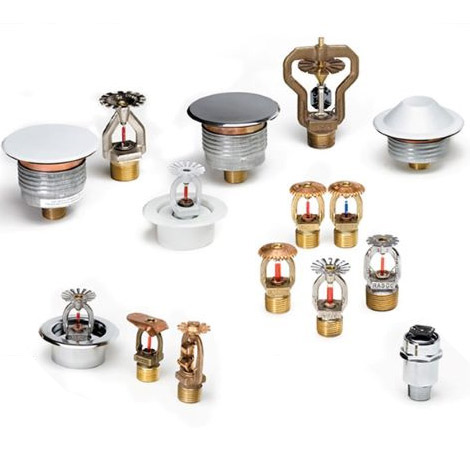History and Development of Sprinkler Technology
Fire sprinklers, a key component of many modern fire protection systems, have a long and fascinating history. In this article, we will explore the evolution of sprinkler technology, discussing the origins, innovations, and contemporary trends that have shaped today’s efficient fire protection systems.
The Beginnings of Fire Sprinklers
The first fire sprinklers date back to the mid-19th century, when in 1864 British inventor Sir Hiram Stevens Maxim invented the first automatic water sprinkler. The operation of this device was based on a special valve that kept the sprinkler head closed, which opened when exposed to higher temperatures. Maxim’s invention became the foundation for later sprinkler systems, which evolved over the following years.
Key Innovations
In 1874, American inventor Philip W. Pratt developed the first mass-produced fire sprinkler, which soon gained worldwide recognition. In 1881, Frederick Grinnell introduced significant improvements to his invention, including a faster response time to temperature increases, which made Grinnell’s sprinklers more effective.
The development of fire sprinklers gained momentum at the turn of the 20th century, when standards were introduced that allowed for their mass production and the integration of sprinkler systems with other building systems.

Modern Sprinklers
In the second half of the 20th century, fire sprinkler technology improved significantly. New types of sprinklers were introduced, such as semi-automatic sprinklers, high-pressure sprinklers, foam sprinklers, and closed-body sprinklers. Modern sprinklers are characterized by high sensitivity, rapid response to temperature increases, and effective fire extinguishing.
Trends and the Future of Fire Sprinklers
The development of fire sprinkler technology shows no signs of slowing down. Today, there is an increasing emphasis on eco-friendly, energy-efficient, and efficient fire protection systems. Here are some of the trends that are shaping the future of fire sprinklers:
- Integration with intelligent building systems: Modern fire sprinklers are increasingly integrated with intelligent building systems, such as industrial automation, energy management or security systems. This allows for more effective monitoring, control and monitoring of fire protection systems.
- Variable-flow sprinklers: Innovations in sprinkler technology also include variable-flow sprinklers, which adjust the water flow to specific fire conditions. This allows for more effective fire suppression while reducing water consumption.
- Small Diameter Sprinkler Systems: Small diameter sprinklers enable effective fire extinguishing using smaller amounts of water, which translates into reduced loading on building structures and reduced losses due to flooding.
- Wireless monitoring systems: The introduction of wireless systems for monitoring and controlling fire sprinklers makes their management easier, especially in large facilities. This technology allows for quick detection of potential problems, failures or maintenance needs.
- Personalization of sprinkler systems: The ability to customize sprinkler systems to the individual needs of users and the characteristics of a specific building is also playing an increasingly important role. These systems are designed to maximize efficiency, both in terms of fire protection and operating costs.
Summary
The evolution of fire sprinklers began over 150 years ago, and since then, the technology has come a long way. Thanks to innovation, fire sprinklers have become increasingly effective, efficient and energy-efficient. In the future, we can expect further development of sprinkler technology to even better protect people’s lives and property from the threat of fire. Continuing investment in research and development, as well as the implementation of new solutions in this field, will be key to maintaining a high level of fire safety and continuing to meet the needs of both customers and users of buildings protected by sprinkler systems.
